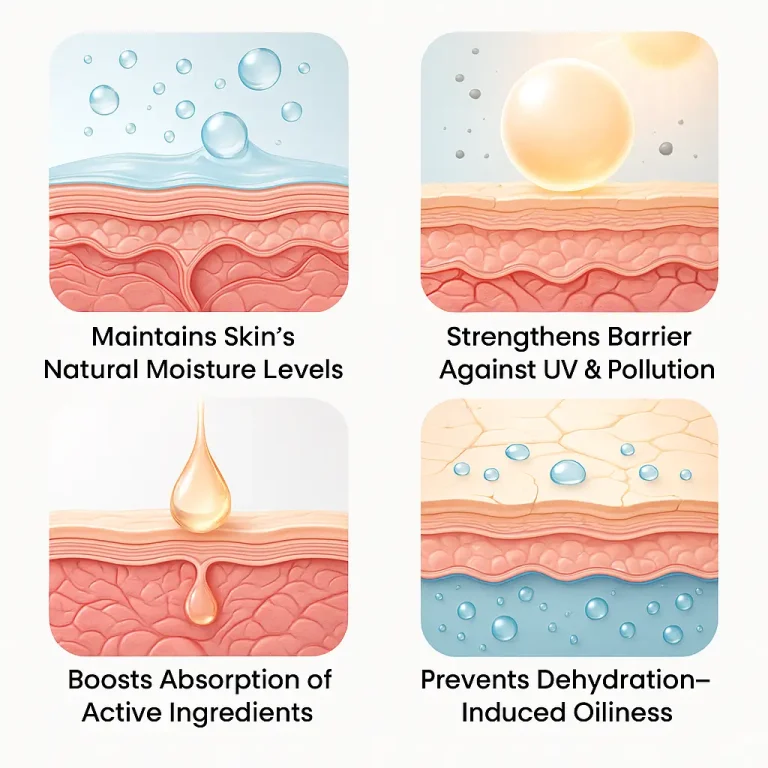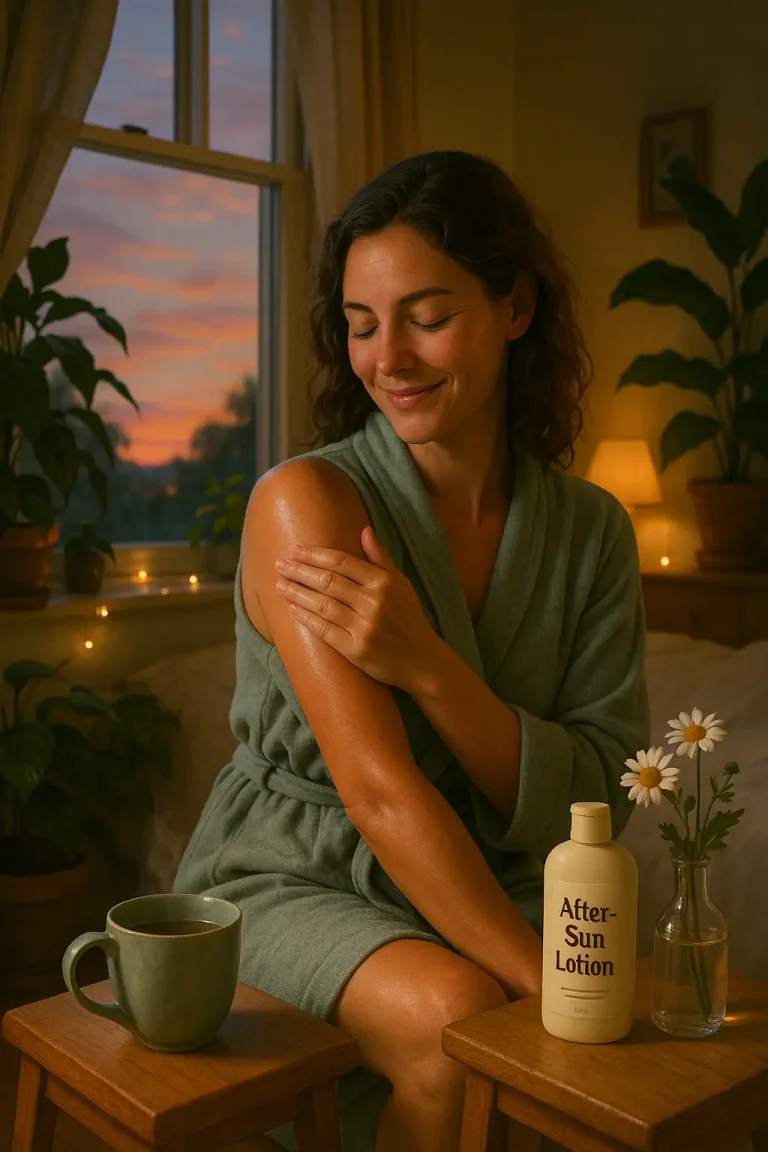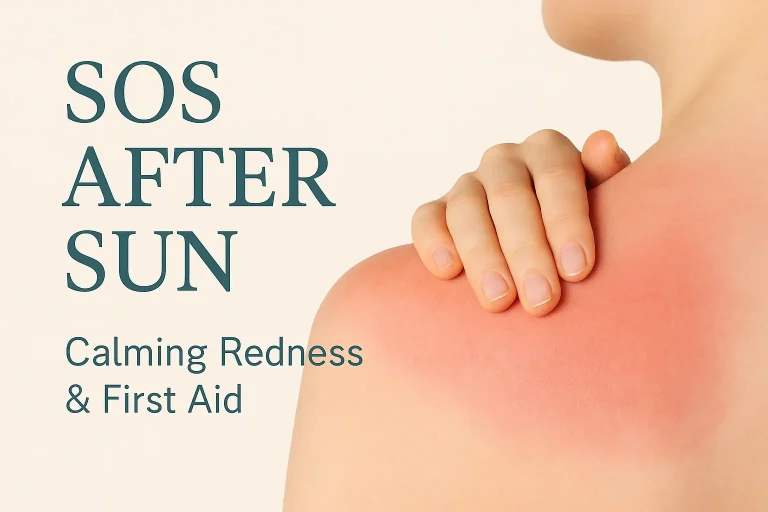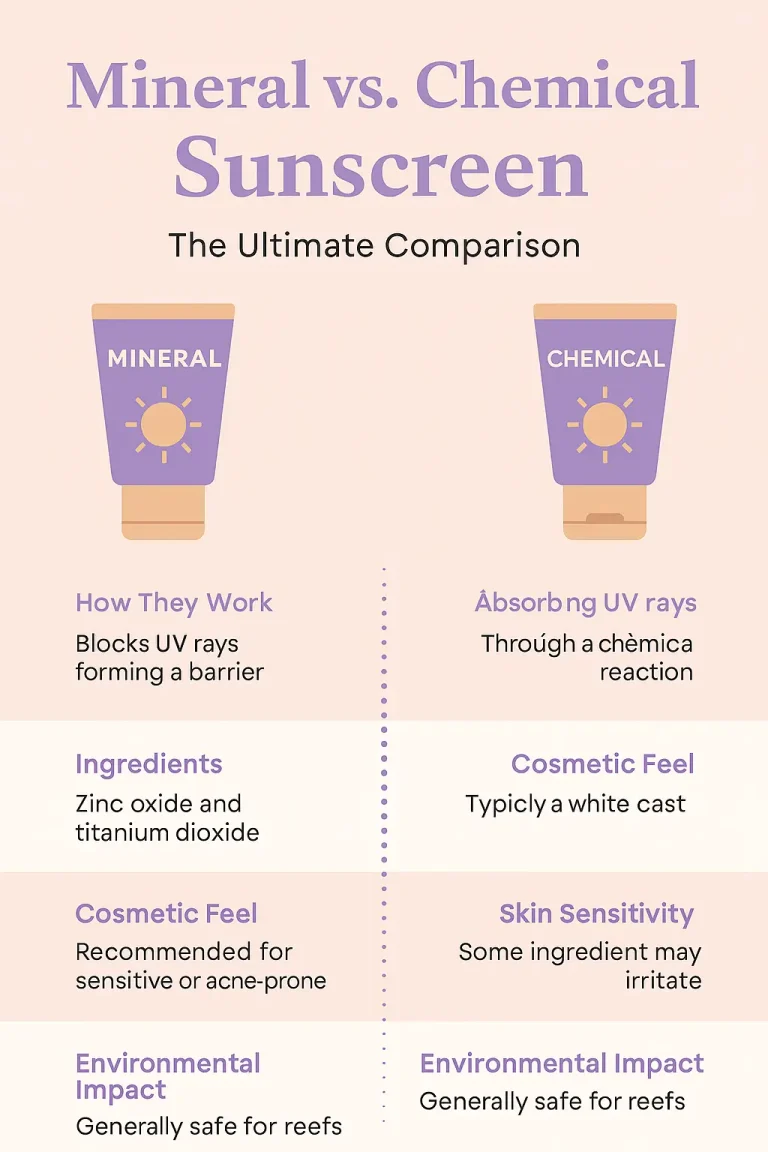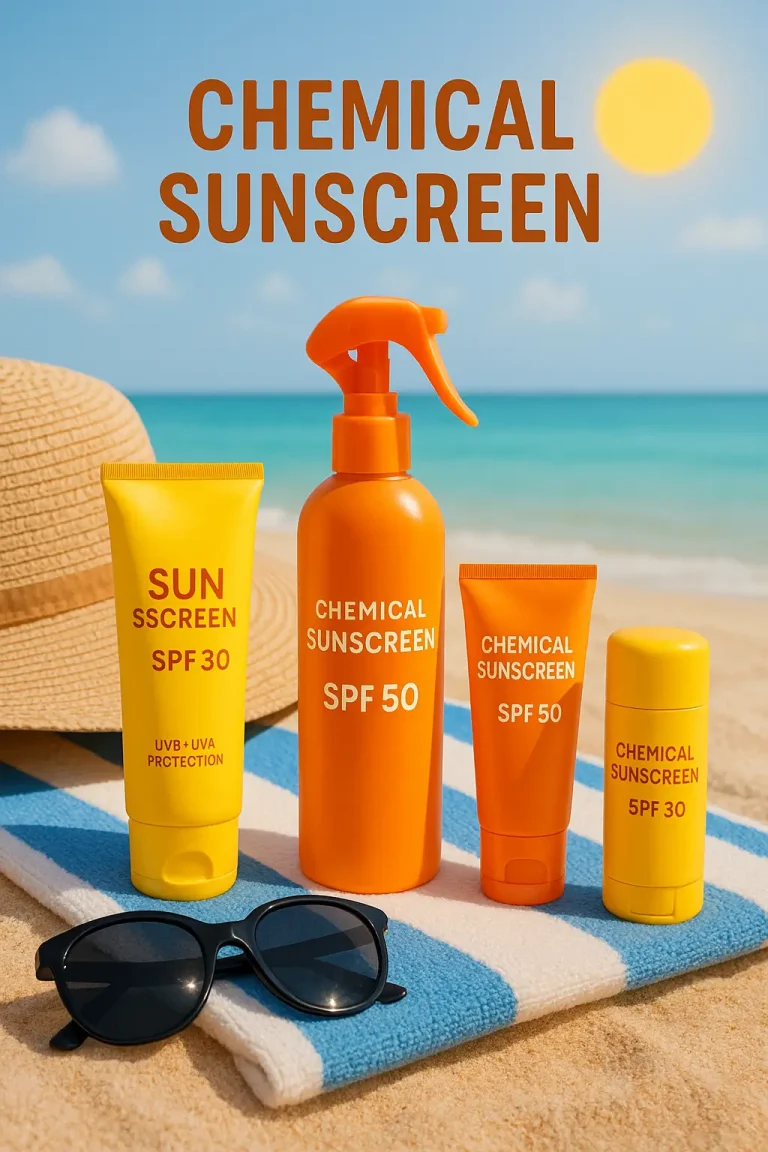Skin hydration is more than just a summer trend—it’s the single most important step if you want to keep your skin healthy, glowing, and resilient through every heatwave. If you’re wondering how to really hydrate your skin and protect your skin barrier this season, you’re in exactly the right place.
If there’s one summer skincare rule you don’t want to break, it’s this: hydrate, hydrate, hydrate. Whether your skin type is oily, dry, or somewhere in between, keeping your skin hydrated is the real secret to bouncing back from the sun, wind, salt, and air conditioning that all try to dehydrate your skin.
Seriously, have you ever noticed what happens after a whole day at the seaside? If I forget to hydrate or skip my moisturizer, my skin feels like it could crack in half by dinner. Maybe you’re the same—or maybe your skin is even more dramatic about it! That tightness, dullness, those little fine lines or flaky patches? Classic signs your skin needs a big drink of water.
But here’s why hydration matters: Hydrated skin isn’t just about a one-time glow. It means long-term strength and elasticity for your skin barrier—so your skin stays smooth, plump, and ready to handle whatever summer throws your way. And there’s real science behind this! Studies show that when your skin has enough water content, it can repair itself faster and keep your natural barrier function strong—even after a day of sun, swimming, or salty wind (PubMed, 2024; Skin Hydration Augmentation Study, 2025).
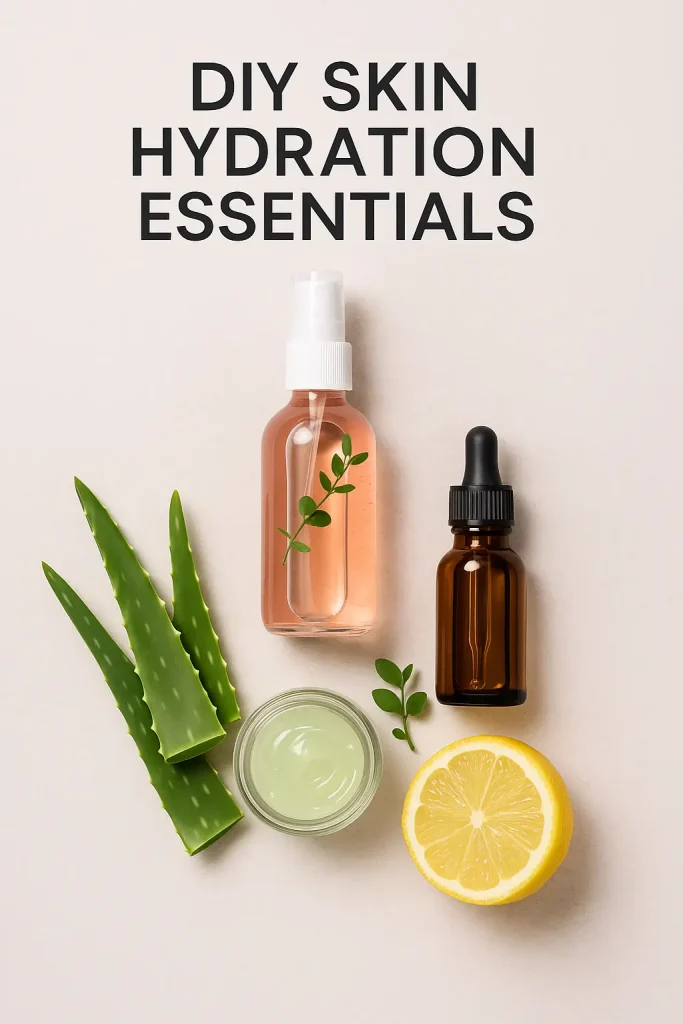
In this post, you’ll learn:
- Why it’s so important to hydrate your skin (and what happens when you don’t)
- How to spot signs your skin is dehydrated—sometimes before you even feel it
- The easiest, most effective ways to boost hydration, lock in moisture, and support your natural skin barrier for every skin type
- Plus, links to my favorite DIY recipes and product guides to help you build a summer skincare routine that really works
Ready to keep your skin hydrated, strong, and totally summer-proof? Let’s dive in—and start with the real science behind skin hydration. Discover how climate change is impacting your skin and get expert tips for protecting your skin barrier in my post on climate change and skin care. For essential tips to protect and hydrate your skin in the sun, explore my best sunscreen tips.
Why Skin Hydration Is Essential for Healthy Summer Skin
Let’s get one thing straight: summer isn’t easy on your skin. The sun is blazing, salty sea air dries everything out, and, if you’re like me, you probably spend half your holiday stuck between sunscreen and that oh-so-wonderful but slightly drying sea breeze. Not to mention all the air conditioning, chlorine, and long, hot days that do their best to dehydrate every skin type—dry skin, oily skin, even the so-called “normal” types.
Here’s what actually happens: When you’re outside enjoying summer, your skin loses water content much faster. UV rays, wind, salt, and even indoor air conditioning attack your skin barrier, causing increased transepidermal water loss (that’s a fancy way of saying: your skin loses more moisture, faster). The result? A drop in hydration levels, weakened barrier function, and skin that often looks dull, tight, or more sensitive than usual.
Real talk: I can’t count how many times I’ve skipped reapplying moisturizer after a swim, only to end up with tightness, flaky patches, or those fine lines showing up by the evening. Even oily skin can feel rough and scaly when it’s dehydrated!
Why Does Hydration Matter?
Hydrated skin is healthy skin—plain and simple. Keeping your skin hydrated means your skin barrier stays strong, your complexion looks plump and glowing, and you’re less likely to deal with irritation, redness, or sudden breakouts. When your skin is dehydrated, you’ll see:
- Dryness and dullness (yep, that “tired” look)
- Fine lines appearing more pronounced
- Increased sensitivity and even eczema flare-ups
- Reduced elasticity (your skin just doesn’t “bounce back” the same way)
Here’s the science:
Clinical studies confirm that a well-hydrated skin barrier protects you from environmental stress, defends against irritants, and helps your skin repair itself quickly after sun exposure or heat (PubMed, 2024; Skin Hydration Augmentation Study, 2025).
Ingredients like hyaluronic acid, ceramides, and natural lipids help the skin retain moisture, improve barrier function, and boost strength and elasticity—especially when used as part of a consistent summer skincare routine.
What’s the Long-Term Impact?
Hydration isn’t just about a pretty glow for a day at the beach. Keeping your skin hydrated supports your skin’s natural repair cycle, protects your collagen, and keeps your skin resilient year-round.
A compromised skin barrier (thanks to dehydration and water loss) can trigger flakiness, redness, even scaly skin or eczema. Over time, the lack of hydration means more wrinkles, less plumpness, and an overall “worn out” look.
Takeaway:
If you want that smooth, healthy skin—even after a full summer of sunshine and salty hair—hydration is your non-negotiable first step. And it’s never too late to start!
Signs Your Skin Needs More Hydration
Ever caught your reflection and wondered why your skin just looks… off? Dehydrated skin loves to send little SOS signals, especially in summer. Maybe you’re noticing dry patches that won’t go away, or your makeup suddenly refuses to blend no matter how fancy your foundation is. Here’s what your skin might be trying to tell you:
- Rough texture and flakiness: You run your hand over your face and it doesn’t feel smooth—it almost feels scaly, or a little gritty.
- Redness or unexpected sensitivity: Even a simple serum or cream can sting. Sometimes your skin just looks irritated for no good reason.
- Tight, uncomfortable feeling: That “my skin might crack if I smile” sensation after a day at the beach, a flight, or a night in air conditioning? Classic dehydration.
- Loss of glow: Your skin often looks dull, tired, or as if it’s lost its usual bounce and plumpness. Even oily skin types aren’t safe—skin can be shiny and thirsty at the same time.
- Makeup mishaps: Foundation clings to dry patches or settles into fine lines. No amount of primer seems to help when skin is crying out for water.
Dry vs. Dehydrated Skin: What’s the Difference?
It’s easy to confuse dry skin with dehydrated skin. Here’s the simple breakdown:
- Dry skin (a skin type) is missing oil. It feels rough, flaky, and sometimes itchy all year.
- Dehydrated skin (a temporary condition) is missing water. Your skin type can be oily, normal, or combination and still be dehydrated—especially if you’re seeing tightness, sensitivity, or a lack of elasticity.
You can tell your skin is dehydrated when it feels both oily and tight, or when flaky patches appear out of nowhere. If your skin often looks dull or makeup just sits on top instead of blending in, that’s another giveaway.
Personal confession:
Every time I travel or spend too many hours outside without reapplying my hydrating mist, my face feels like it’s wearing a too-small mask. One swipe of my usual cream just isn’t enough—it needs water, not just oils!
How to Hydrate Your Skin—Summer Skincare Tips
Ready to hydrate your skin like a pro? Summer is all about keeping things light, layering the right products, and paying extra attention to your skin barrier. Here’s how I keep my skin happy (even after long, salty swims and sticky, hot nights):
1. Hydrating Mists: Your Skin’s Mini Oasis
If you’ve never tried a hydrating mist, summer is the perfect time to start. They’re light, refreshing, and you can literally keep one in your beach bag for a midday pick-me-up.
- Why use a mist? Hydrating mists instantly replenish water content, cool your face, and help other products penetrate deeper into the skin.
- Look for: Rose, lemon balm, lavender, or cucumber hydrosols. Bonus points if you use a formula with aloe or panthenol for soothing and repairing the skin barrier.
- My go-to move: After a long day at the sea, a cold mist from the fridge is the best feeling ever.
Want to get creative? Check out my [DIY Rose & Lemon Balm Hydrating Mist] for a simple, natural recipe that hydrates and soothes any skin type.
2. Serums and Gel-Based Moisturizers: Lightweight Hydration That Lasts
When your skin is dehydrated, layering a lightweight, water-based serum underneath your moisturizer is a game-changer.
- Hero ingredients: Hyaluronic acid, glycerin, panthenol, aloe vera—these humectants draw water into the skin and keep it bouncy and plump.
- “Sandwich method”: Apply your serum to damp skin, then layer a gel-based moisturizer on top to lock in moisture. This helps prevent water loss and strengthens your skin barrier function.
- My summer favorite: I always keep a hydrating serum handy (my [DIY Hyaluronic Acid Serum Recipe] is a reader fave!) and a light gel cream for humid days.
3. Plant Oils: Seal It All In
Don’t skip this step! Even in summer, a drop or two of the right plant oil can make a big difference—if you layer it after your water-based products.
- Best choices: Squalane, jojoba, or evening primrose oils. These mimic the skin’s natural lipids, help prevent transepidermal water loss, and give your skin that healthy glow.
- Key tip: Oils should never replace your hydrators—they’re there to lock in moisture and protect your skin barrier.
- Not sure about oils? My [Botanical Oil Guide] breaks down which oil is best for every skin type.
4. Layer, Layer, Layer
Don’t be afraid to layer lightweight products. The trick is:
- Mist first (for instant hydration)
- Serum second (humectants, for deep hydration)
- Moisturizer or gel cream (to trap all that goodness)
- A drop of oil (to seal it in and support your skin barrier)
- Finish with SPF (always—hydrated skin still needs protection)
5. Hydrate From the Inside Out
No fancy routine can save your skin if you’re not drinking enough water.
Eat water-rich foods (cucumber, watermelon, leafy greens), sip water throughout the day (aim for at least 6–8 glasses), and be mindful of caffeine and alcohol intake, which can dehydrate your skin from the inside.

Quick Recap for Glowing Summer Skin
- Layer hydrating products from thinnest to thickest
- Apply moisturizer and oil to damp skin
- Refresh with a mist during the day (especially after swimming)
- Support your skin barrier with gentle, non-stripping cleansers and nourishing serums
Pro tip: Consistency is everything. Hydration is not a one-time fix; it’s your daily summer ritual for glowing, resilient, and happy skin.
The Fix:
Notice these signs? It’s your cue to up the hydration: reach for lightweight serums with hyaluronic acid or glycerin, layer a hydrating mist, and lock everything in with a moisturizer while your skin is still damp.
💧 Next up: Want to make sure you’re not sabotaging your summer glow?
You’ve learned the science and essentials of summer skin hydration — now make sure you’re not sabotaging your results.
Discover the most common hydration mistakes (and how to fix them fast) so your skin stays plump, glowing, and healthy all season long.
Read Part 2: Summer Skin Hydration Mistakes (and How to Fix Them) for the most common mistakes and quick fixes that will keep your skin plump, glowing, and healthy all season long.
Remember, keeping your skin hydrated isn’t just about looking fresh for a day — it’s about building a strong, resilient skin barrier that will serve you well all summer (and beyond). Treat your skincare routine as a daily ritual of self-care, and enjoy the little glow-boosting moments along the way.
Kristina

